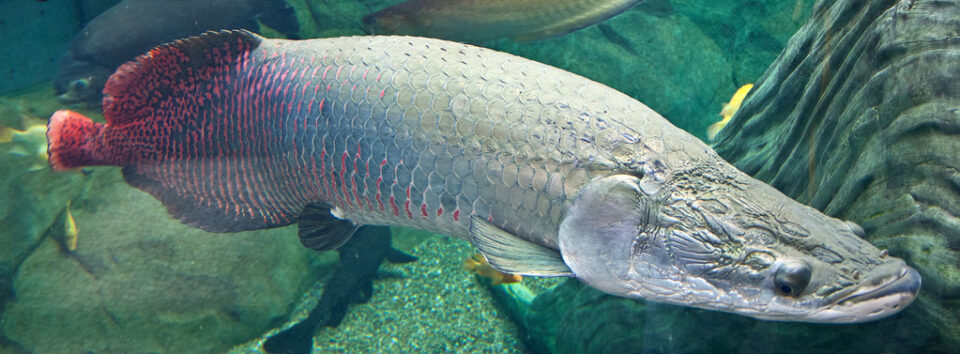The strong scale structure of the Aparaima fish helps them cope with the sharp teeth of predators in the same habitat as piranhas.
In order to survive in the region of Amazon Lake teeming with piranhas, the Aparaima gigas of the Arowana order developed scaly armor. The outer scaly layer is mineralized, becoming a barrier preventing threats such as predator teeth. However, the ridges and protrusions make the scales flexible, according to research published in the journal Matter.

The inner scaly layer binds to collagen following the Bouligand structure. Similar to spiral staircases, this structure also exists in the shells of lobsters, beetles and crabs, says study co-author Wen Yang at the Department of Nanotechnology at the University of California at San Diego.
To find out the hardness of balances, the team at the University of California at San Diego and the University of California at Berkeley carried out pressure resistance tests. First, they crushed the arowana scales in water for 48 hours. They then concentrated the compressive force between the scales and stretched the outer edge. During this process, they noticed that the outer crust first expanded, then cracked and flaked off. The scaly structure helps prevent cracks from spreading.
The team concluded that the indoor and outdoor ladders work together to form an ultra-light, flexible and sturdy structure. According to them, it is one of the most sustainable bio-foldable materials on the planet. This structure could be modeled for future artificial armor.
The Arapaima gigas (sea dragon) live in the Amazon basin and have been introduced to Southeast Asia. Among the largest freshwater fish and the fastest growing vertebrates on the planet, the arowana can grow up to 3 meters in length. This species has the ability to breathe air. Every 5 to 15 minutes, they must rise to the surface of the water and inhale the air to collect 95% of the oxygen they need. The rest is replenished by the water flowing through the gills.


